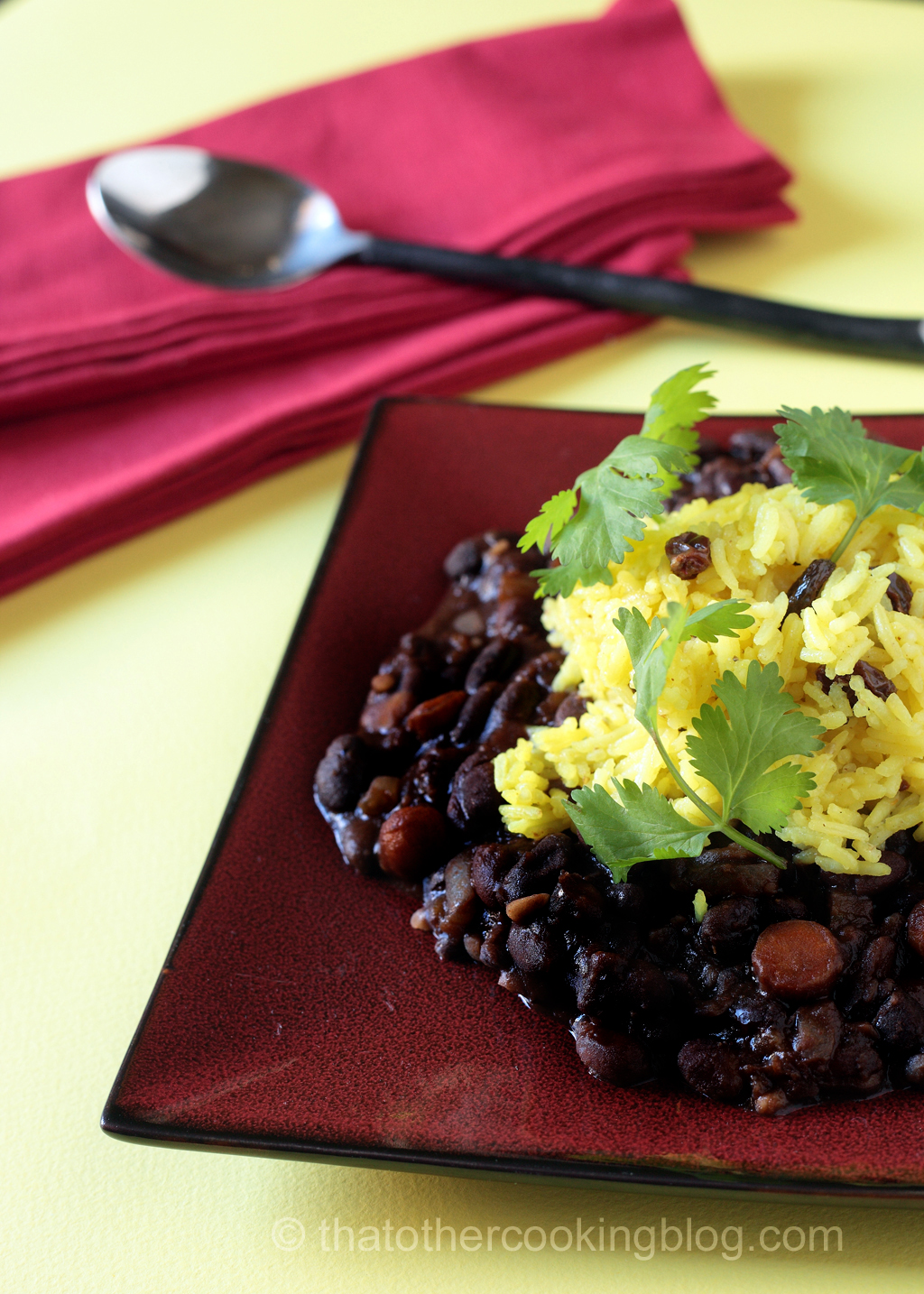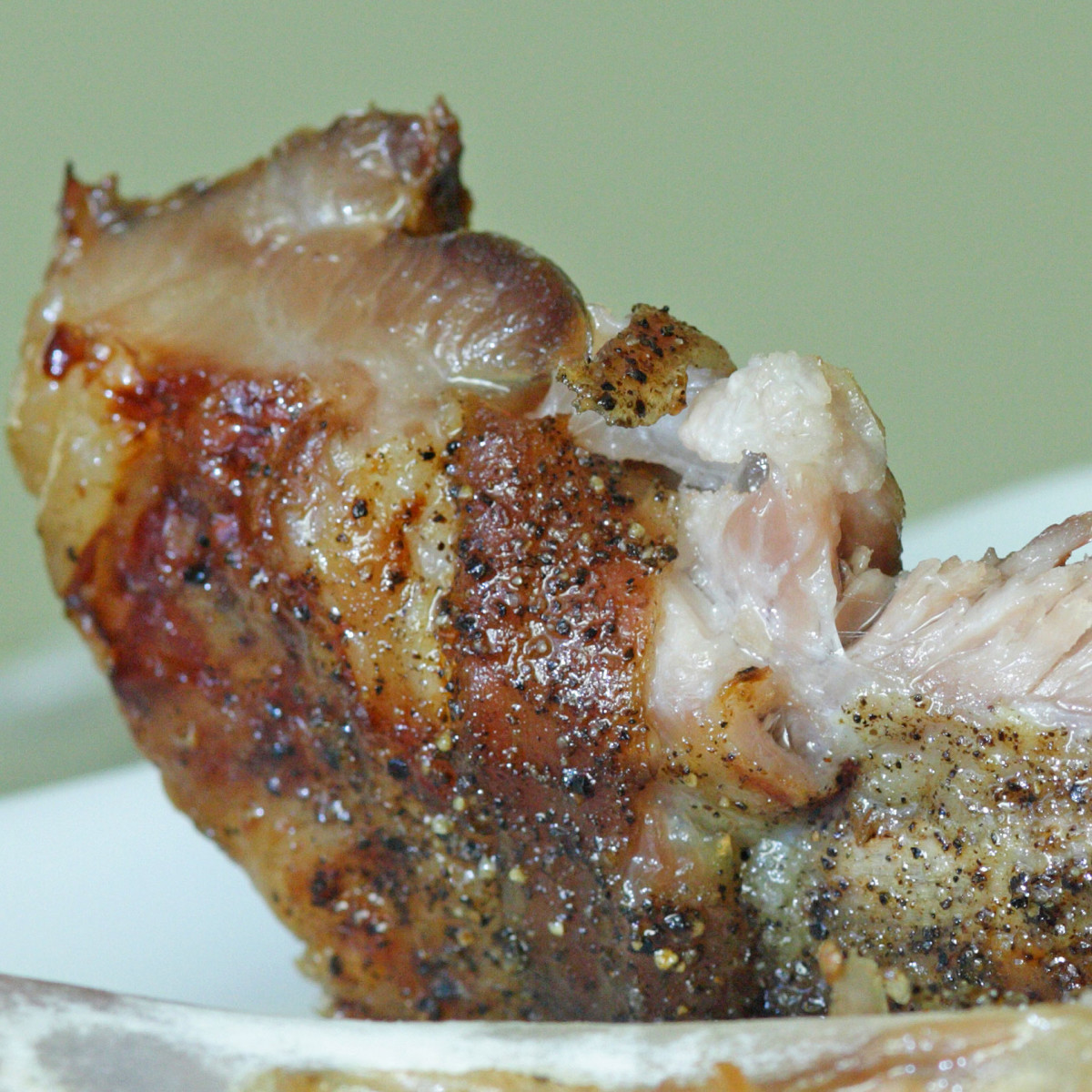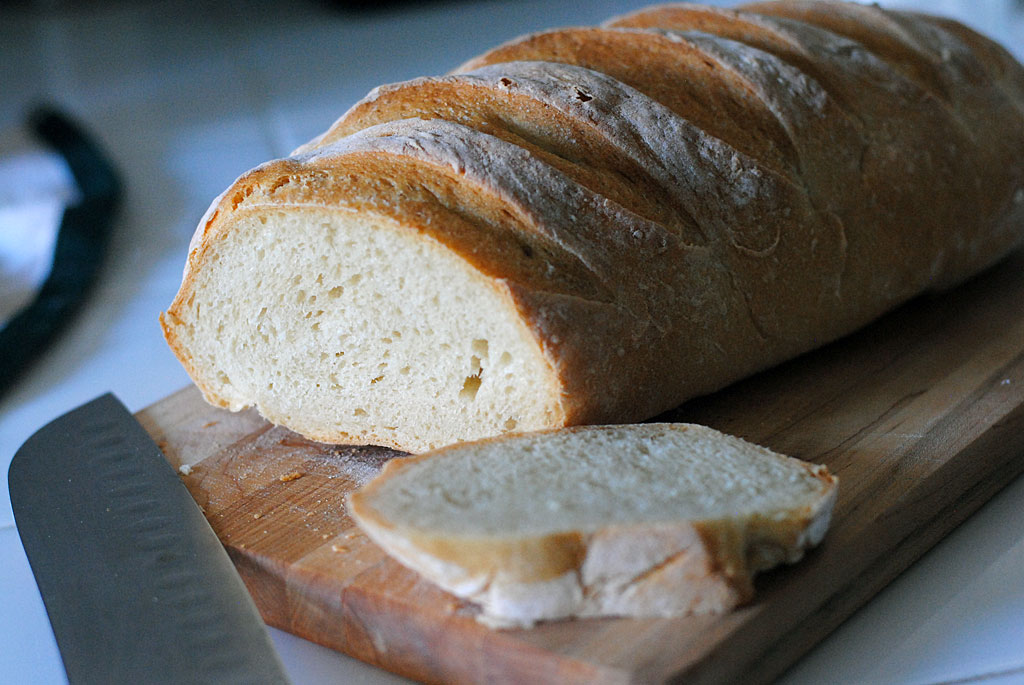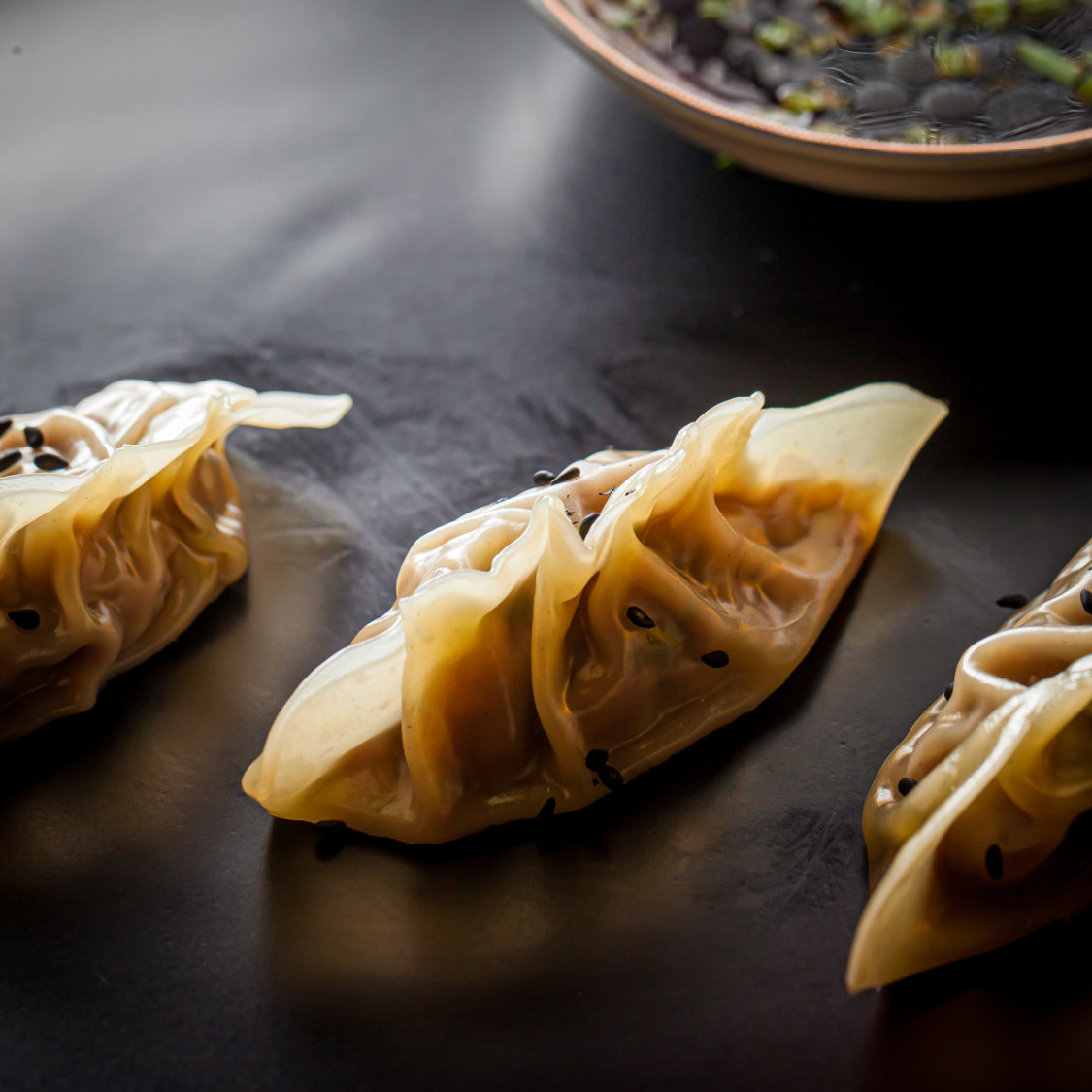Have you ever tried making black beans? It took me a forever to get it right. Some legumes are easier than other. Lentils, super easy, black beans, not so much if you don’t keep in mind a couple of things. The first few times I made black beans… the soup actually didn’t taste great, and it didn’t sit well in my stomach either. It had some really weird after taste… But I knew I had had black beans many times at restaurants and they were pretty delicious and my stomach was cool with them. What was I doing wrong?? well, turns out I was doing a couple of things wrong…. big… surprise. Here’s what I’ve found after reading about it and doing some research. I turned to cuban recipes, cubans in my opinion cook the most delicious back beans I’ve ever had, followed by venezuelan black beans recipes. Creamy, a bit tangy and sweet, extremely flavorful…. yeah, you get the picture, right!? Here’s 3 tips that will make cooking these guys a yummy success:
1. Soak them in water overnight.
Ok, most people know about this one. Most beans are soaked before cooking. It speeds up the cooking time, plus helps ridding them from impurities. Another less common reason to soak beans is to reduce the presence of the toxic compound phytohaemagglutinin, a lectin that can upset the tummy basically, and cause gas… and in high doses can have some more serious effects on the heath. Soaking and boiling reduce the presence of this compound. A couple of links here and here if you want more info. But don’t worry, even without soaking or boiling, this compound doesn’t present anything serious.
2. Simmer them in just water until soft.
The skin of a black bean is quite tough actually, if compared with lentils for example. Adding salt, sugar or any acidic ingredient before they are cooked will keep the skins tough and they will be hard to digest and not fun to eat. Lentils can benefit from the opposite specially if being cooked for a cold salad. By adding salt or calcium chloride, we can help their skin toughen up a bit and retain their shape. But back to black beans… It takes about an hour and a half to soften them. I use a pressure cooker, so 30 to 40 minutes. It isn’t common to take a portion of the beans once cooked, mash them and return that paste to the pot to thicken things up… my mouth is watering again…crap. I’d suggest avoiding slow cookers.
3. Add sugar and vinegar to season.
This is possibly the one I would have never figured out in a million years. I’ve been making beans for a while, and it never occurred to me reaching for sugar and adding a few pinches… it almost seams counter intuitive… and I’m from Venezuela, where people actually add a couple of tablespoons of sugar to their black beans… to which I’ve always gone “yuk” And I would probably still do… but once I added a bit of sugar and balanced it with a bit of wine vinegar…. all of a sudden.. they tasted incredible. The after taste was gone, and spoon after spoon I couldn’t stop stuffing myself… a sign that a recipe is worth posting on the blog! Cubans season their beans this ways. Instead of trying “my own thing” I should have just turn to their wisdom!
Black Beans Ingredients (makes 4 portions):
1 1/2 cups dried black beans
1/2 cup pork stock (optional*)
1 cup vegetable stock (optional)
water (enough to cover gains plus an inch)
1/2 cups onion, finely chopped
1/2 cups green bell pepper, finely chopped
2 Tbsp tomato sauce
1/2 carrot finely chopped
3 cloves garlic, minced
1/2 tsp black pepper
1 Tbsp olive oil for sautéing
1 tsp oregano
1 tsp cumin, ground
1 tsp coriander seeds
1 tsp sweet paprika
1 bay leaf (or 2 if leaf small)
1 Tbsp white wine vinegar
1 tsp sugar
Fresh scallions, cilantro or parsley, to taste
Saffron Rice Ingredients (makes 4 portions):
1 cup of basmati rice
16 strands of saffron (more or less)
1 tsp garam masala
1/4 c raisins
1/2 Tbsp EV olive oil
salt to taste
Method:
For the black beans: Simmer them in water until soft. Approximately 30-40 mins in pressure cooker. Put aside. Add some olive oil to a clean pot. Medium heat. Sauté the veggies for about 7 minutes until translucent and fragrant .Add the tomato sauce and cook it until it turns a dark brown color, about 6 minutes. Add the garlic, cook for a couple of minutes stirring. Add the stocks, and the spices, add the bay leaves. Cook for about 20 minutes or pressure cook for 10. Add the beans. Cook for another 10 to 20 minutes, reducing the water content. You want a thick consistency. Scoop out some beans with a ladle and mash them. Return them to the pot. Add sugar, and vinegar bit by bit until you’re happy with the taste. Set aside.
* the pork stock I rendered from the bones and cartilage left after carving clean my pork butt here. Pressure cook bones for about 1 1/2 hours in enough water to cover the bones. Don’t add anything else. Reduce stock to 1/2 or 1/3. Strain and transfer to a clean container. Refrigerate. Scrape off the fast film on top and discard. You’d be left with pork gelatin pretty much. Pork flavor whenever you need it!
For the saffron rice: Wash the rice in cold tap water until the water runs clear and not milky. Set aside. In a medium size pot, add the saffron strands, crush them with your fingers, they are dry and should pulverize easily. Cook the saffron over medium heat for a couple of minutes. Don’t burn! Skip this step if you aren’t confident you can just get a light toast on it. Add a tablespoon of water and boil, stirring the saffron to release its magic. Add rice to the pot. Add water to cover rice by half an inch approximately. Bring to a simmer. Stir occasionally to make sure the rice isn’t stock at the bottom burning and that is evenly hydrated and not sticking together. Add some salt. Simmer until “al dente”. Keep in mind basmati is a delicate rice and cooks faster than other shorter grain rices. About 7 minutes, but keep an eye on it. The water should reduce and get absorbed by the rice by the time the rice is cooked. If there is too much water, rinse the rice. With some practice you can tell how much water to use and not have to drain it in the end which means, some of that saffron stock will get lost. Add a pinch of garam masala, some olive oil, adjust the salt, add the raisins, stir and mix well. Done.
To serve: Ladle black beans over a plate. Add a scoop of rice on top. Garnish with some cilantro or parsley. Go to town. It’s incredibly delicious. A bit of a twist on a classic cuban dish: Frijoles Negros using this saffron rice with some middle eastern components, similar to Pilaf. Enjoy!
Wanna get more sous-vide cooking guides and cool cooking how-to’s in your mailbox? You know what needs to be done!
We never spam. You should only be getting updates when new content is posted on the site. We also respect your privacy. We don’t share your email address with anyone and you can unsubscribe anytime!






10 comments
These sound fabulous and full of healthy flavour.
🙂 Mandy
thanks Mandy! I can’t stop eating them and they get better with some fridge time too
My one sister-in-law is a vegetarian and on a recent visit opened my eyes to some wonderful bean dishes. I will hopefully get her recipes soon. 🙂
I’m a big fan of black bean soup and never heard of adding sugar and vinegar. I will give ’em both a try next time. I, also, save the pork bones when I buy a pork shoulder. I usually use them to flavor my Bolognese — and to make my dog really happy. I’m sure he won’t mind if I use them to make soup, instead of sauce, before he gets his paws on them. 🙂 Thanks for both ideas.
John! thanks for stopping by and for your comment. Do you have a recipe for black bean soup you really like? The addition of sugar and vinegar is to get the right “cuban” flavor, although I believe it helps with some off flavor form previous preparations I tried, but maybe Im chasing a ghost. I could swear I could detect an off aftertaste flavor, hard to describe, medicinal bitterness? not sure.
For 2 Winters now, Paul, I’ve said I was going to write and post my family’s lentil and my bean soup recipes. And then, before I know it, Spring arrives and I say next year. I’ll do better this year. Promise. 🙂
hahah! I would love to check it out when you do, really curious! thanks John.
This looks amazing, Paul – and great legume cooking tips. Best – Shanna
thanks Shanna! 🙂
Thanks for the excellent tips, I wouldn’t have known what to do with them otherwise! Can’t wait to make some delicious recipes with them.